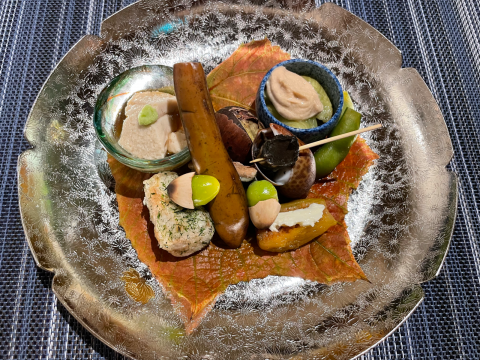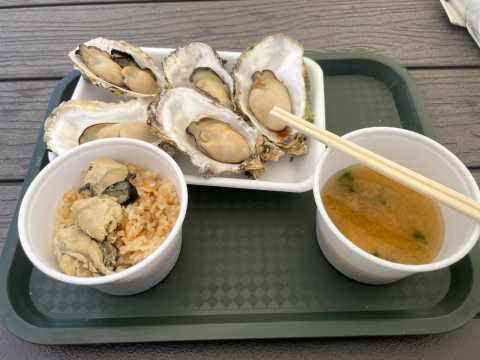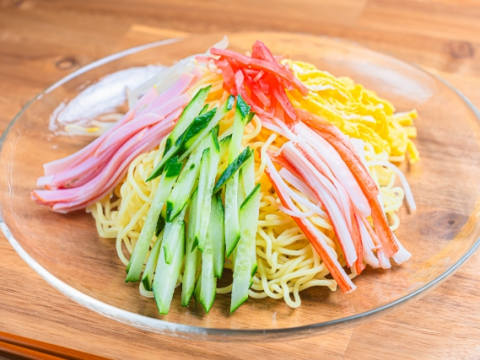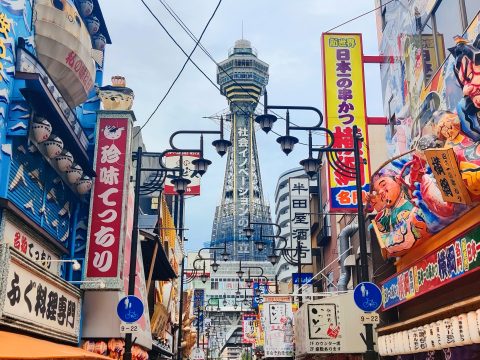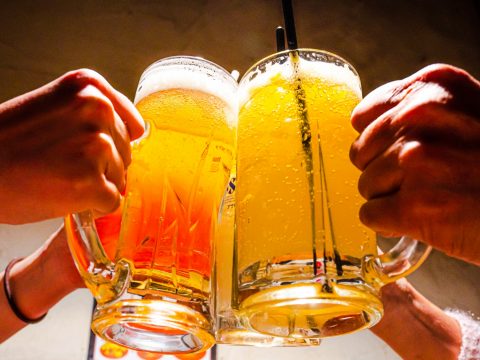Taiyaki (鯛焼き)
JAPANESE FOODS
25.05.2023
Even if it’s not one of the most famous dishes in Japan, if you’ve ever been to the country, it will be familiar to you. Or at least if you have seen a lot of anime or read manga, and at some point some of the characters eat one. Today I want to introduce you to one of the Japanese sweets that, even being simple and cheap, is one of my favorites.
Is it a fish? Is it a sweet? No, it’s both!

Taiyaki is a Japanese fish-shaped cake, commonly sold as a street food. It imitates the shape of “tai” (鯛), or red sea bream, which is named after that. You can buy it literally everywhere: from matsuri and shops specialized in it, to supermarkets and even convini.
How is it prepared?

It follows the same method to prepare waffles: the batter is poured into a fish-shaped mold for each side, then the filling is put on one side and the mold is closed. It is cooked until toasted, then ready to eat! Some stores even sell grills that include the molds to make taiyaki, so you can make them at home if you are a big fan of it.
What is it filled with?

The most common filling is red bean paste (anko), made from adzuki beans. But there are other options if you are not a big fan of anko or want to try different flavors. Other common fillings may be custard, chocolate and cheese. There are also seasonal limited editions, such as taiyaki of sakura flavor in sakura season; or with the arrival of autumn, sweet potato taiyaki. Even some shops sell them with gyoza filling or sausage inside!
An interesting history behind it

It can seem that is a new dessert, but actually, it is not. Taiyaki was first sold in Japan in 1909, when a shop specialized in imagawayaki (another kind of Japanese cake similar to taiyaki) was not doing very well in sales with it. The owner decided to innovate, baking the cakes into fish shapes resembling to “tai”. In addition, “tai” are considered a symbol of luck and fortune, and were an expensive fish for most people, so it was kind of a “chance” for people to taste that fish at a low price (even though it is not a real fish!).
Memories with taiyaki
Eating taiyaki was one of the things I knew I wanted to do when I came to Japan. Not long after arriving, I went to a store specializing in it and bought what would be my first anko taiyaki.

I sat on a bench in the park next to my house, watching the sunset, lost in the tranquility of the moment. It’s funny how memories are sometimes associated with food. Every time I eat a taiyaki, I remember that moment, but not only that, but also the excitement I had when I got here and the desire for adventure (and obviously, how delicious it was). So, get out there and make memories with taiyaki!

Carmen Alvarez
Carmen grew up in a city in southern Spain. After graduating from university, she decided to move to Tokyo to study Japanese. She enjoys walking the streets of Japan, discovering new places and trying different Japanese dishes.
Read previous articles by the writer
Read latest articles
KEYWORDS
- # PICKPICK
- # Resume
- # alcohol
- # Rice
- # Soup
- # winter food
- # Fast Food
- # seafood
- # spicy foods
- # raw food
- # fermented food
- # Transportation
- # MEAT
- # Edo culture
- # suits
- # clothing
- # drink
- # fish
- # seasoning
- # Japanese New Years Foods
- # Toshikoshi soba
- # Osechi Ryori
- # Ozoni
- # Christmas
- # Japanese fusion pasta
- # Wafu Pasta
- # Japanese Hot Pot
- # なべ
- # 鍋
- # Miyazaki
- # Chicken Nanban
- # Karamen
- # Autumn Wagashi
- # Mushi-yokan
- # Imo-yokan
- # Japanese Autumn Fruits
- # Autumn
- # Vending Machine
- # fall
- # dango
- # Chestnut rice
- # saury
- # Mushroom
- # Rice vinegar
- # Japanese condiments
- # 調味料
- # Sake
- # Mirin
- # Soy sauce
- # Japanese Noodles
- # Udon
- # Ramen
- # Yakisoba
- # Soba
- # Japanese Seaweed
- # 海藻
- # かいそう
- # Payslip
- # Training
- # Japanese summer foods
- # 和菓子
- # Wagashi
- # ryokucha
- # 夏
- # 飲み物
- # Ramune
- # ラムネ
- # Pokari Sweat
- # ポカリスエット
- # Calpis
- # カルピス
- # Mugicha
- # ume
- # 梅
- # うめ
- # umeshu
- # job hunting
- # tofu
- # Recruitment in Japan
- # miso
- # Japanese cuisine
- # Yellowtail and bonito
- # Children’s Day
- # Kashiwa Mochi
- # Chimaki
- # fruits
- # Kusamochi
- # Types of Agriculture in Japan
- # bread
- # パン
- # パン屋さん
- # japanese bread
- # shokupan
- # meal blead
- # anko bread
- # 桜
- # さくら
- # cherry blossom
- # visa
- # hanami
- # omotenashi
- # sakura
- # おもてなし
- # Japanese hospitality
- # oshibori
- # wet hand towel
- # hand towel
- # restaurant
- # Commuting in Japan
- # Women-only cars
- # Exit gate
- # japanese train
- # train
- # valentine
- # Japanese sweets
- # 朝食
- # Japanese Breakfast
- # Breakfast
- # Japanese
- # 日本
- # healthy
- # persimmons
- # hoshigaki
- # HR
- # work in Japan
- # jinji ido
- # corporate systems
- # Japanese work culture
- # bento
- # ekiben
- # shinkansen
- # omiyage
- # train station
- # Japanese culture
- # work culture
- # mentaiko
- # umeboshi
- # Japanese snacks
- # potato chips
- # Japanese potato chips
- # Japanese writing
- # seaweed
- # konbu
- # ocean foods
- # shio konbu
- # dashi
- # miso soup
- # food processing
- # pear
- # nashi
- # sweet potato
- # japanese sweet potato
- # stingray
- # satsuma imo
- # food value chain
- # homecooking
- # agriculture
- # Japanese homecooking
- # farming
- # nikujaga
- # shojin ryori
- # meat and potatoes
- # traditional foods
- # comfort food
- # buddhist food
- # manufacturing
- # factory
- # eihire
- # vegetarian
- # food and beverage
- # izakaya
- # yatai
- # japanese festival
- # taiyaki
- # matsuri
- # summer
- # Ikayaki
- # smart agriculture
- # shaved ice
- # kakigori
- # かき氷
- # summer dessert
- # Japan
- # Japanese foods
- # dessert
- # fruit
- # matcha
- # icecream
- # Pikcup
- # Pikc up
- # Pcikup
- # skilled labor visa
- # working visa japan
- # Dineer Table in Japan
- # Japanese manner
- # Japanese food
- # Japanese Table Manner
- # Chopsticks
- # Japanese traffic signs
- # traffic information
- # road rules in Japan
- # chocolate
- # green tea
- # Osaka
- # Work Japan
- # Japanese company
- # ikura
- # sushi
- # nigiri
- # wasabi
- # PCIK
- # PICK UP
- # PICK
- # PICKUP


